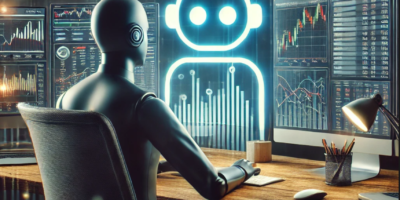With the movement to reopen countries and institutions around the world, and the anticipated eventual rebound of global economies, it is important to not assume an immediate recovery. There remain a multitude of factors that could deter the resumption of economic growth due to possible underestimates of unemployment numbers, changes in supply chains, and the continued troubled relationship between the US and China.
Unemployment may be underestimated due to the Paycheck Protection Program (PPP) in the US. The PPP allowed businesses to retain their employees and keep their payrolls due to a financial backing from the government. This means employees that may have been laid off due to Covid-19 were kept on a company’s payroll because of this business loan program. As the US begins to move away from various financial support packages, the employees previously on PPP may be susceptible to lay-offs, disproportionately affecting the unemployment numbers. Although the underestimated employment is a reason for concern, many consumers have not spent their money in the past couple months due to the uncertainty in the markets and stagnating consumer confidence. The pent-up demand, in addition to the fiscal packages resulting in financial benefits for consumers, could result in a bump in spending. In an economy like the US, where 70% of internal demand is from consumers, consumer spending is essential. This bump in spending may be short lived as underlying uncertainties may be a cause of concern.
The massive increase in global economic uncertainty, starting with a trade war and amplified with a worldwide pandemic, have altered many supply chains. The trade war with China increased prices of inputs, and the coronavirus stagnated the availability of other inputs. Supply chains were forced to adjust to become accessible, putting pressure on the current supply models and globalization. An immediate effect could be the shortening of supply chains, as producers many become closer to the end consumer. This would end issues of large supply chains being easily disrupted. Another aspect of this is the decreasing demand of cheap labor, previously a main component for the involvement of China in supply chains. As the labor component of manufacturing becomes less important due to advances in technology and automation, cheap labor is no longer worth the risk. The results of this could establish two ecosystems: a Chinese ecosystem and a US ecosystem. The world was already heading in this trajectory, and the coronavirus served as an accelerant. This separation in ecosystems will only strengthen the existing tension between the US and China.
As the US and China develop their own ecosystems, trading between the two will diminish. China engaged in an expensive building process which is largely the cause of their credit bubble, but also a way for them to no longer be reliant on US exports. China experienced a credit bubble burst due to overbuilding, then an immediate lack of inflow due to the pandemic. The recession in China may deter this separation from US reliance, but does not avoid the fact of moving towards a position of self-reliance. There is a development of another cold war type of scenario in every aspect of competition, as the rivalry between the US and China has implications of spilling into the global markets. The main effect is countries being forced to pick sides between the West and East, creating the discussion of political vs. economic reliance. A country like Australia may be forced to align itself with the US due to their political beliefs and face an economic downturn due to their economic reliance on China. Or align with China for economic benefits and lose the US as an ally.
When looking towards the future, where does your country fit into the equation, and how have you planned to adjust for these impending tensions? Although there appears to be slow economic recovery starting, there are some underlying indications of tensions and uncertainty that could deter or negatively affect the economic environment for a period to come.
When you Should be Worried about Inflation
There has been a discussion about the impending inflation as a result of the current fiscal policies in the US, but the question is when. The current cycle of deflation cannot last forever, as the printing of money and increased government spending will have implications of inflation. Three triggers to look for when analyzing inflation is money printing, debt-based spending, and massive devaluation of currency. The current situation in the US has examples of money printing and debt based spending; however, there has not been a massive devaluation of currency. This is important because a devaluation in currency is the last trigger before a spiral of hyperinflation in the US. A devaluation of the dollar is important to monitor, and would be the final push towards hyperinflation.
Although there are three defined trigger points towards hyperinflation, there are a variety of other factors that should also be considered. A major one is technology, which acts as a deflationary pressure. When analyzing inflation in the long term, the emergence of technology has to be taken into account. If technology is broken up or slowed down through taxes or regulations, there is a reason for concern. This can also be coupled with a friction in supply chains, where more friction could result in higher costs and time lag. Higher costs is another area to keep track of.
As of right now there is no concern for a major alarm, but it is important to be actively watching.
How to Know if you are in an Economic Bubble
There are a variety of factors that indicate whether a consumer is in an economic bubble before it bursts. Using this framework, you are better equipped to identify and take advantage of a downturn.
- Reversed Demand Function: A typical demand function consists of higher prices resulting in less demand, and vice versa. When higher prices result in higher demand, this is a key indication of troubles ahead.
- Mispriced Money: When money is allocated in places that don’t make sense. This takes place when the value of something is placed higher than its fundamental value.
- Overconfidence: “It is different this time,” is never correct and should never be a reason to overlook an overvaluation.
- Political Manipulation: When investors feel there is less risk due to a belief that governments will back losses, which is not always the case. Never hedge your investments with this in mind.
- Epidemiology: A reason for concern occurs when discussion surrounding an asset class becomes popular opinion. When everyone from supermarket cashiers to small talk between friends surrounds an investment, the purchase may be a large red-flag.
Don’t be the person who makes the mistake of losing everything in a bubble when all the indications point towards an economic bubble burst. Instead, recognize the indications and make the necessary adjustments.
How the Current Civil Unrest affects your Investments
The death of George Floyd in Minneapolis at the hands of law enforcement has sparked outrage and unrest across the US and worldwide, with implications of racial inequality on a large scale. An underlying message of the civil unrest is the financial inequality and hardships experienced by the working class at the hands of institutions as a whole. Commonly, unrest and protests do not have an economic effect. Historically protests have not been an indication of market volatility, but the current situation can create a chain reaction with implications affecting the financial markets.
There is a two part process where civil unrest becomes a chain reaction causing widespread economic uncertainty. The first is when the public perception increases, and the greater population becomes involved in something that may not directly apply to everyone. This applies to the current negative view towards law enforcement. The second is when the negativity towards the officers becomes widespread, and there is a tipping point where the police are forced to defend themselves. This cycle will continue, as both victims and law enforcement find no common ground and feed into the next level of escalation. A continued escalation has greater implications. Although there is no immediate concern that civil unrest impacts financial markets, there are key things to keep in mind moving forward. If protests are blamed for spikes in coronavirus, there are further implications towards divide and tension. In addition, depending on which way the upcoming US presidential election goes, one side is going to be extremely disappointed and could trigger more protests. Continued civil unrest could further deepen a divide between people and society, with larger implications.

















